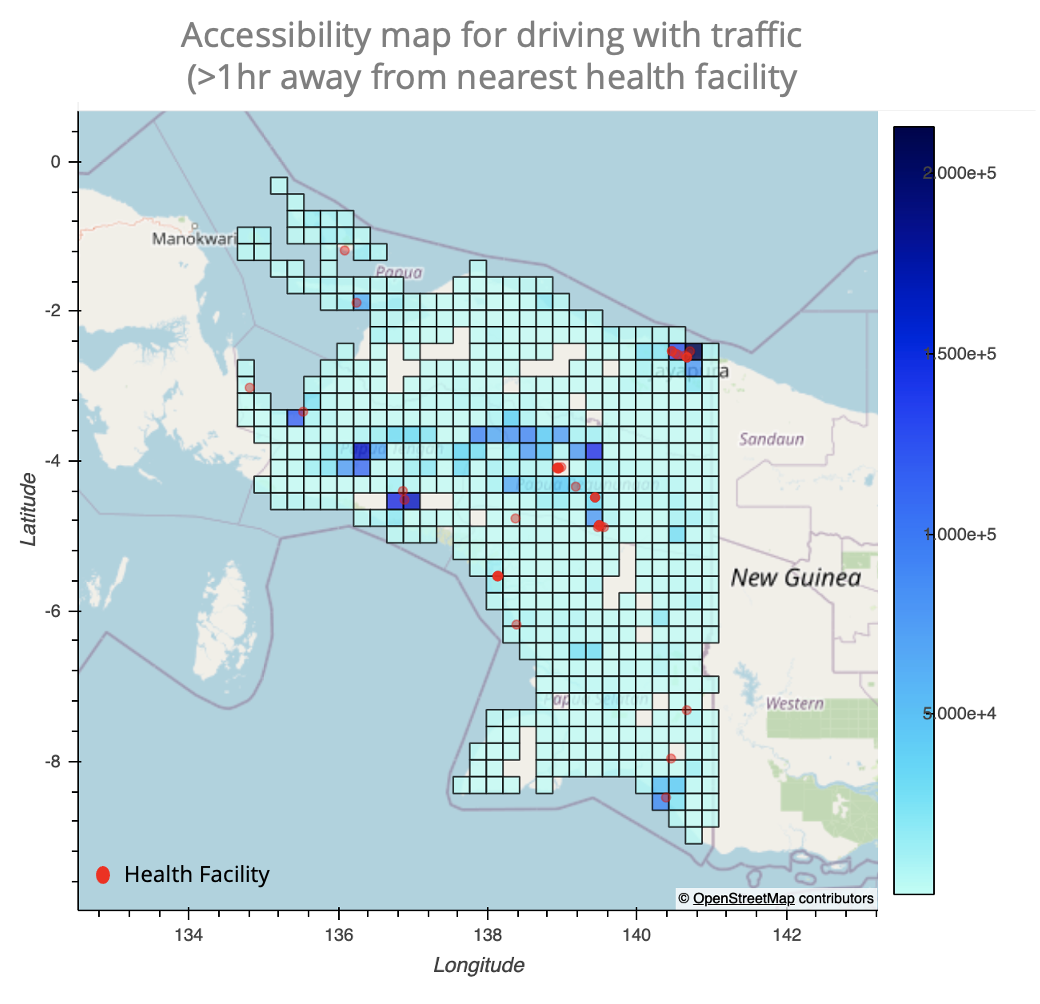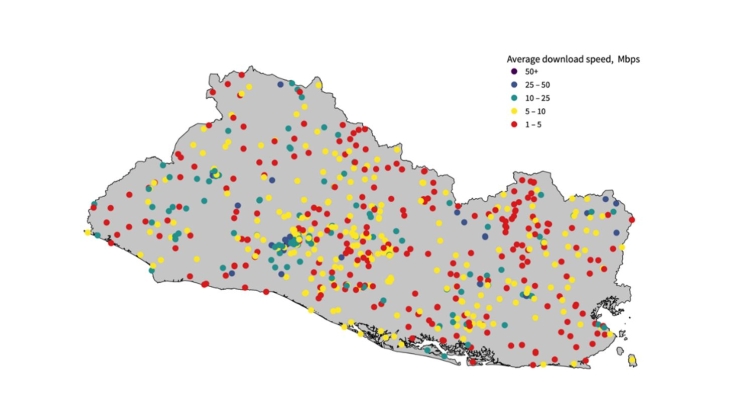Holly Krambeck has been with the World Bank for 13 years and currently manages the Data Lab – a network that builds her organization’s capacity to deliver modern data solutions. Prior to her current position, she led transportation infrastructure lending projects in emerging economies, ensuring investments were informed by the best data available.
Since traditional data collection methods for transport projects can be costly and labor-intensive, available data are often out of date, or worse, stored in paper stacks throughout transportation department offices. “I knew we could do better,” Holly said. She sought partnerships with companies that were routinely collecting the frequent, granular data her government counterparts needed to plan transport projects – namely ridesharing, remote sensing, and mobile app companies. Through a pilot supported by AusAid and the Korean Green Growth Trust Fund, she leveraged data from Grab to derive traffic speeds, Maxar to count vehicles, and Google to plot travel patterns.
What was missing was an efficient market that could match the supply of private sector data and public-sector demand, grounded in a shared legal and IT framework that would protect rights and benefit both parties.
Holly Krambeck Founder Development Data Partnership
Building on lessons learned from these early experiments and with the support of the then-World Bank Chief Economist Paul Romer, she founded the Development Data Partnership, a collaboration between international organizations and companies, supporting the responsible use of alternative data in international development.
The Challenge
While private-sector data holds much promise, there are many challenges to expanding its use for public good. According to Krambeck, from the perspective of international development practitioners, the challenges can be summed up as: finding the data, negotiating access rights, setting up IT resources needed to securely receive and analyze the data, and responsibly sharing reproducible results. Each of these challenges can require in-house expertise and significant resources to ensure a successful project, but even with all of these in place, there are no guarantees that the private sector data will generate the hoped-for insights.
From the private sector perspective, the question often comes down to the costs and risks associated with sharing data for experimentation, when there is no clear upside to doing so.
“What was missing,” Krambeck noted, “was an efficient market that could match the supply of private sector data and public-sector demand, grounded in a shared legal and IT framework that would protect rights and benefit both parties.”
In the past, we were approaching companies and now that model is changing, where companies are approaching us, because they see value in working with international organizations who share data governance principles and infrastructure.
Claudia Calderon Partnerships Lead Development Data Partnership
The Solution
To establish connections between private data and public good use cases at scale, the Development Data Partnership established five work streams, starting with a legal framework.
The Partnership created a standard Master Data License Agreement, which, unlike past one-off agreements, covers all staff and is sufficiently flexible to support a wide range of data and projects over time. This agreement is shared between international organizations who have joined the Partnership – IMF, OECD, UNDP, IDB, and CAF – creating enormous efficiencies in terms of establishing access and use rights to data.
The team has also developed an online marketplace for linking data license agreements with project use cases, as well as a robust technical backend for data management and a data documentation hub to facilitate data science collaboration between organizations and companies.
“In the past, we were approaching companies and now that model is changing, where companies are approaching us because they see value in working with international organizations who share data governance principles and infrastructure,” said Claudia Calderon Machicado, who first came to the project through her work at the Inter-American Development Bank (IDB) but is now a member of the World Bank team. “Today, you can access the data you need almost immediately, without ever needing to see all the work that made this connection possible.”

Data provided by Waze App. Credit: World Bank
International organizations have used Partnership data to cover a range of novel uses, such as to analyze population movements after disasters, evaluate policy responses to the pandemic, improve road safety in data-scarce environments, and, most recently, understand the social and economic impacts of the conflict in Ukraine.

These high-value examples are more visible to companies thanks to a growing library of use cases. The cases are accessible through a portal that both development and data partners can access. In addition to compelling narratives, the portal houses a repository for derived data products and algorithms—or data goods—that help increase impact.
Underpinning all of these work streams is the Partnership governance, which makes productive collaboration between international organizations and companies possible.

World Bank analysis based on Speedtest Intelligence® data from January 2019 to December 2020 provided by Ookla®. Credit: World Bank
The Takeaway
With this one-stop shop in place, the Development Data Partnership continues to pick up speed. They have nearly 270 projects on their platform, addressing 13 Sustainable Development Goals (SDGs).
The Partnership now engages a wide range of tech companies across the globe. Data partners (or, organizations that provide data or services under the Master Data License Agreement), include AtlasAI, LinkedIn, Mapbox, Meta, and Twitter. There are over 25 partners and counting. The list of development partners likewise continues to grow, with the World Bank and the
Inter-American Development Bank was joined by the International Monetary Fund, the Organisation for Economic Co-operation and Development (OECD), the Rockefeller Foundation, the Development Bank of Latin America (CAF), and the United Nations Development Programme (UNDP).
Continuing to grow the community of contributors and collaborators on both sides remains a priority for the Partnership. When they see organizations working on similar challenges, finding that common ground through the portal, and deciding to partner together to make the work go farther, faster, that’s when they know they’ve been successful.
“We have built a legal and technical infrastructure that supports public-private collaboration on individual projects. Moving forward, we want to use this infrastructure to address shared global challenges with the best possible data, bringing together data science talent from across the international development community,” Krambeck said, citing an emerging Climate Resilience Data Collaborative as an example of what she wants to see more of—cross-sector, interdisciplinary collaboration to drive meaningful change on critical social issues.


